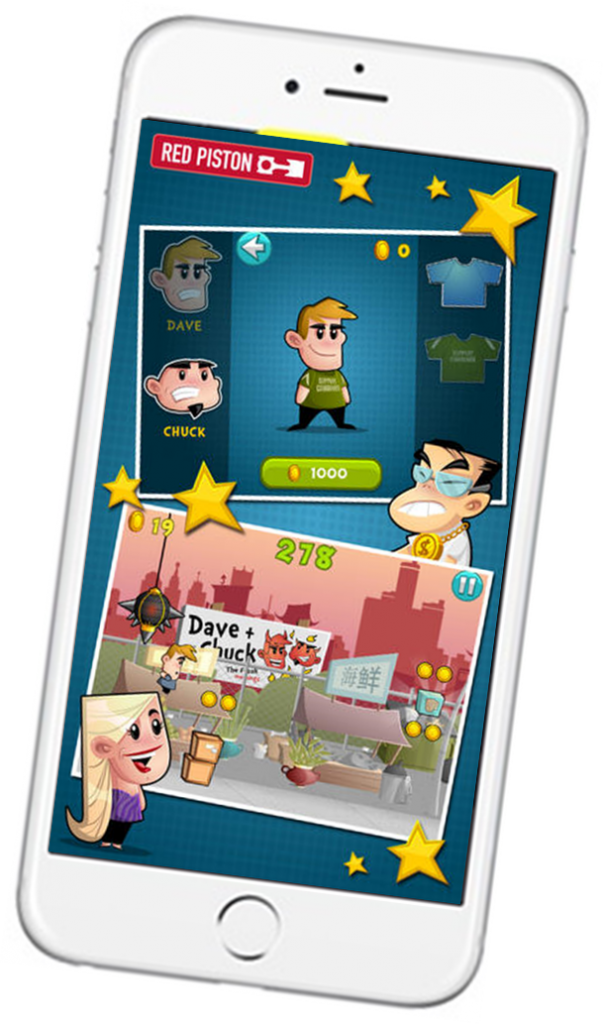When WRIF/Detroit (Greater Media) took the plunge and changed morning shows in the spring of 2013, it was a big risk. The station parted company with the perennially successful Drew and Mike Show which had long dominated the Detroit area. Dave and Chuck the Freak were the young guns working across the street at 89X, and WRIF gambled they would be a great fit for the 40+ year-old brand.
 One of the things that made the new show so appealing, says WRIF Program Director Mark Pennington, was their relationship with the audience beyond the airwaves: “I have never seen a more socially connected show. It’s part of the fabric with Dave and Chuck. They post constantly while on the air and continue doing so during the day, on weekends and even on vacation.”
One of the things that made the new show so appealing, says WRIF Program Director Mark Pennington, was their relationship with the audience beyond the airwaves: “I have never seen a more socially connected show. It’s part of the fabric with Dave and Chuck. They post constantly while on the air and continue doing so during the day, on weekends and even on vacation.”
With some down time between their old job and their new job at WRIF, Dave and Chuck could have taken time off or just tried to maintain a level of audience interaction. Instead, they took their digital efforts to a new level with the launch of Dave and Chuck the Freak’s Kick Ass Game, a mobile app for fans of the show.
To Pennington the game is a perfect fit with the show and the station. “It’s a great extension of the show’s humor and attitude and another unique way Dave and Chuck have been able to connect with their massive fan base.”
For WRIF, it’s part of a tradition of marketing beyond the airwaves. As Pennington notes, “We have always tried to think out of the box to promote the station, like co-branding with Kid Rock’s ‘Made in Detroit’ clothing line and creating our own beer. As long as it’s done right, it’s great to experiment with new, unique ways to promote established brands like WRIF or Dave and Chuck the Freak.”
Since the game’s launch, Dave and Chuck have added new levels and found novel ways to include the listener in the process. This includes dreaming up a contest where the audience plays a virtual role in the game. The show ran a contest, and the winners were digitized and added to the game. It’s the ultimate application of fans being integrated with Dave & Chuck’s brand.
Pennington sees even more unique opportunities down the road, “As hopefully just the first in a series of video games, this could have huge sales implications. Instead of selling a banner and a schedule, how about ‘We can include your logo and product in our next video game?’ There is so much potential to create cool content for the audience, add revenue, and meet the challenging demands from digital advertisers.”
Because of this unique approach to bonding with their audience and using the digital tool kit, we asked the show’s Dave Hunter to talk about the game and the connection with fans for this week’s edition of Radio’s Most Innovative.
JM: How did the idea of a video game for the show come about?
DH: We had to sit out a 6 month non-compete before starting at WRIF, and we couldn’t discuss where we were going or what we were doing. We thought a game would be a very cool and interactive way to keep the show’s brand alive during our hiatus. We’ve always tried to give our listeners ways to be involved with the show, even when we’re not on the air, and this just seemed like a natural progression.
JM: What data did you see or what did you know about your audience that told you this was a good idea?
DH: We didn’t really. It was just a gut instinct that our core listeners would love a different, interactive, fun video game that incorporated all of our characters.
JM: What was the biggest challenge in getting the project launched? How did you overcome the obstacles?
DH: We were really lucky to work with developers at Red Piston, Inc. that actually listened and enjoyed the show, so they contributed as much to the process as we did. The hard part really was just figuring out how to spread the word about the game, when we weren’t on the air. We relied solely on social media and encouraged the listeners to share the game and that really worked well for us.
JM: Talk about how the game has helped extend the show’s brand and awareness.
DH: Our show is highly interactive through phone calls and social media, so this is just another tool to keep the show top of mind. Even when the show is over, listeners can download the podcast, listen to the 24/7 stream, and check out our website. But now they can also be sitting at the dentist’s office playing a video game as Dave or Chuck the Freak and feel like they are still a part of our show.
JM: How did you decide on what types of game to create?
DH: The team at Red Piston was instrumental. They came to the table with some great ideas we were able to implement to fit the show. The game has multiple levels, so it’s actually like several different games in one.
JM: What was it like seeing the digitized versions of yourself for the first time?
DH: It was pretty amazing to see little animated versions of ourselves in a video game. The little kid in us was stoked. LOLl! We were nervous to see how it would turn out, but the Red Piston guys blew us away with how amazing it was.
JM: What led to the decision to charge for the game instead of making it free?
DH: App development is not cheap, especially when every level is a new animated game, so the 99¢ fee was a way to help the developers recover some of the costs from all their hard work. No one on the show makes any money from the game.
JM: When did you decide to deal the audience into the game?
DH: We are continually looking for ways to incorporate our listeners into the show, so this seemed like the next logical step. We know how amazing we felt to star in our own video game and wanted to give the listeners the chance to experience the same thing.
JM: What was the reaction from your listeners to the contest and how did the winners respond to seeing themselves in the game?
DH: The audience feedback has been incredible, and the winners were amazed to see their cartoon versions for the first time. They just were so happy to be a part of the game. Who wouldn’t love the chance to see themselves animated into a kick ass video game?

JM: For any other show or station considering launching a game, what is one piece of advice you would share?
DH: You need to have clearly defined characters and a solid idea of the end game. Think of the types of games that would work best and storyboard how you envision it playing out.
JM: What advice do you have for less established shows with innovative ideas that aren’t sure how to get started bringing them to fruition?
DH: Always keep the listener in mind. What are they interested in? What do they like to do? Try and be a part of that somehow. Build your brand every way you can. You don’t need a video game to do that. You’ll be amazed at how far responding to emails, tweets, Facebook posts, and stopping to say hi to people when you’re out and about will go to build a loyal listener base.
JM: Finally, I’ve got to ask, who’s got the higher score on the game, you or Chuck?
DH: Chuck is way more of a gamer than I am. No doubt he has a better score.
Thanks to Mike Stern for writing this week’s RMI.
INNOVATION QUOTE OF THE WEEK:
“Everyone who’s ever taken a shower has an idea. It’s the person who gets out of the shower, dries off and does something about it who makes a difference.”
Nolan Bushnell, founder of Atari and inventor of Pong
Check out some of our “Past Innovators” here:
- June 5 GenX.fm
- June 12 GeoTraffic
- June 19 Paul Lamere
- June 26 Dave Ramsey
- Can Radio Afford To Miss The Short Videos Boat? - April 22, 2025
- Media And Technology In 2025: Believe It Or Not! - April 18, 2025
- In Radio, You Just Never Know - April 17, 2025






Leave a Reply